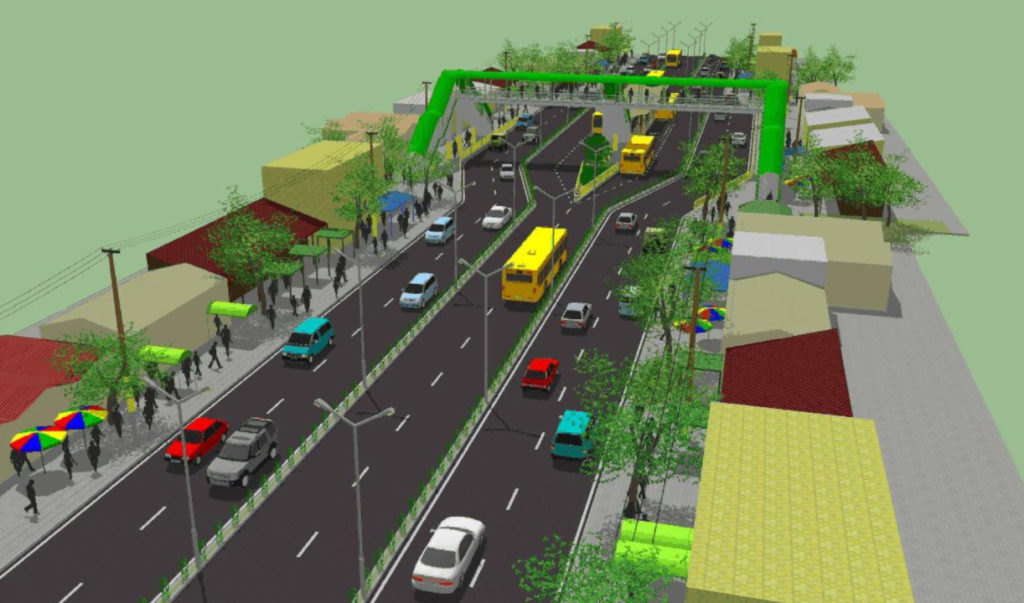
This is an artist’s rendition of the Bus Rapid Transit (BRT ) project in Cebu City. Source: Colin Brader, March 2012
CEBU CITY, Philippines — There is no stopping the Department of Transportation (DOTr) from implementing the “improved” Bus Rapid Transit (BRT) system in Cebu.
DOTr Undersecretary Mark Richmund De Leon told Cebu reporters on Tuesday, September 3, that they are currently completing the detailed engineering design of the first phase of the BRT package.
The first phase of the BRT package covers N. Bacalso Avenue, which is located near the Cebu South Bus Terminal (CSBT), up to the Cebu Provincial Capitol on N. Escario Street via Osmeña Boulevard.
De Leon said they target to complete the civil works for phase one before the end of 2021.
DOTr will put up median bus stops and an Intelligent Traffic System (ITS) in this route.
In July 2019, the DOTr released the new version of the Cebu BRT package which covers 13.83 kilometers from the South Road Properties (SRP) up to Cebu I.T. Park in Barangay Lahug.
This is shorter than the original 23-kilometer route of BRT which covers N. Bacalso Avenue from Barangay Bulacao up to the Banilad-Talamban corridor.
Cebu City North District Representative Raul Del Mar earlier said any changes in the BRT would be detrimental for Cebuanos.
“That is a reduction in the total dedicated BRT length by almost 50 percent, from 23 kilometers to 13 kilometers,” Del Mar said in in a privilege speech he delivered in Congress on August 27,
READ: Any change in the BRT route is ‘detrimental’ to Cebu City, Cebuanos – Del Mar
READ: BRT put on hold
But De Leon said they did not shorten the route but even “expanded” the BRT coverage which will include the feeder lines from Talamban to IT Park (5.68 kilometers), Talisay to Mambaling (7.55 kilometers) and Talisay to SRP (7.36 kilometers) which totals 34.43 kilometers.
“We are even creating more ridership. We are even creating more accessibility features to the overall system. Remember that what the DOTr is putting is an intermodal basket of solutions,” De Leon said.
De Leon explained that the road networks in the feeder lines are too narrow to create dedicated lanes for the BRT. Instead, feeder buses will be deployed in these areas to fetch passengers in going to the nearest BRT bus stop.
Even with the dedicated lanes and median bus stops, De Leon said they ensured that there will still be four lanes available to mixed traffic in their new BRT package route.
The feeder lines will also accommodate mixed traffic or a combination of private and public utility vehicles (PUVs).
De Leon said a total of 84 bus stops will be built along the three feeder lines.
The DOTr official added that the changes in the BRT project package are necessary to complement other components of the Integrated Intermodal Transport System (IITS) which includes the aerial ropeway transit (ART), monorail, and point to point bus system. / celr

